Casa Belvedere (“beautiful view” in italian) celebrates Italian arts and culture, and has now broadened to include a wine bar and bocce courts
by Jessica Jones-Gorman • Photos by Alex Barreto
For years, Gina Biancardi would drive by the expansive three-acre estate at 79 Howard Avenue and simply gaze at its lavish grounds and Italian Renaissance-style architecture.

“It reminded me of an Italian villa,” Biancardi said. “The beautiful columns, stuccoed exterior, and clay tiled roof…I admired every detail. It was such a picturesque property with breathtaking views and so many architectural intricacies; I instantly envisioned an Italian cultural center in its place.”
So, each day, when the marketing executive picked up her children at Notre Dame Academy across the street from the property she dubbed “House with a Beautiful View,” she contemplated.
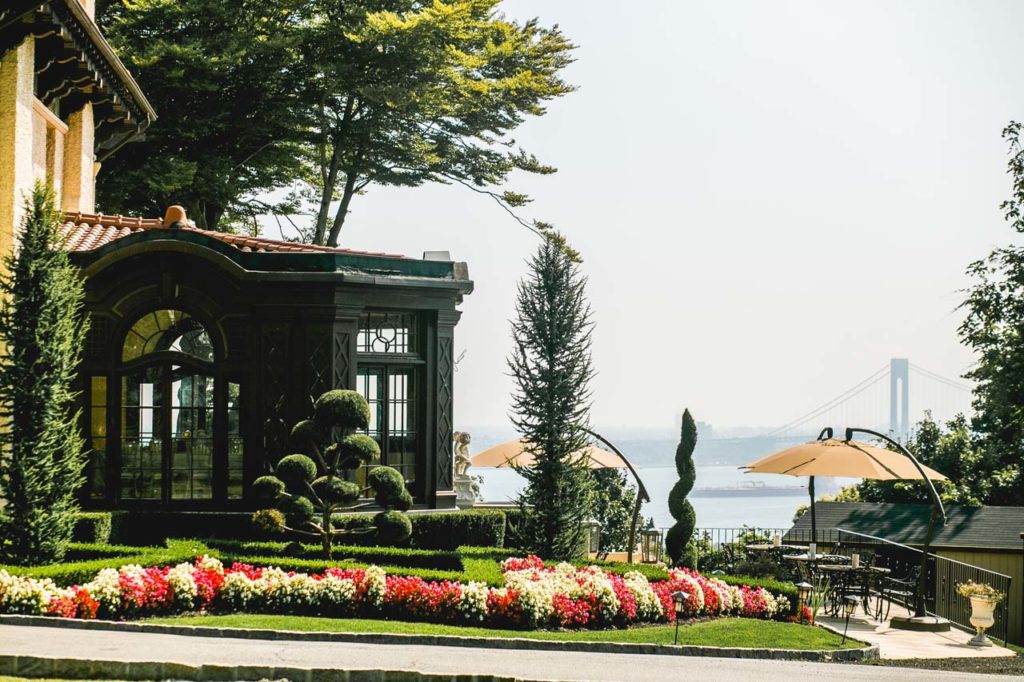
“I would watch the ‘For Sale’ sign go up and down; the house was on the market for 11 years,” Biancardi said of the private residence. “And then in 2008, I made an offer and purchased this magnificent home, which, inside, was an absolute disaster.”
Overgrown with vines, broken down, and structurally compromised, the home, which had a handful of owners during its 100-year existence, had been vacant since 2004, and the dormancy showed in its bones.
“The building was last rented by Wagner College, which used the property as their president’s official residence,” Biancardi said. “But it went unoccupied for four years after that and was in desperate need of renovation.”
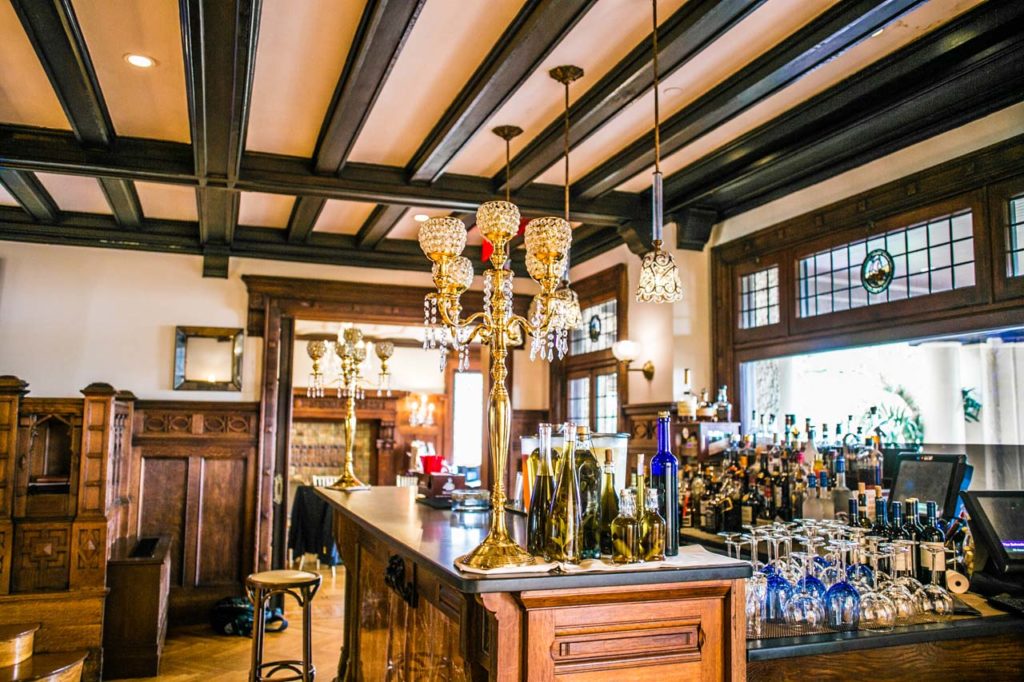
But that didn’t deter Biancardi, who, upon purchase, donated the mansion to the city, secured its landmark spot in the National Register of Historic Places, and filed for non-profit status.
“I intended to convert the property into an Italian cultural center from the second I bought it,” Biancardi said. “But to go from private home to non-profit was a long road. It took me three years just to get the permits, and every city agency imaginable had to give its stamp of approval. I had to apply for grants and map out construction for the building’s adaptive reuse. I persevered, though, and by 2012 we started renovating.”
In order to convert the structure from private home to public institution, Biancardi had to upgrade all of the utilities and secure its vital support structures.
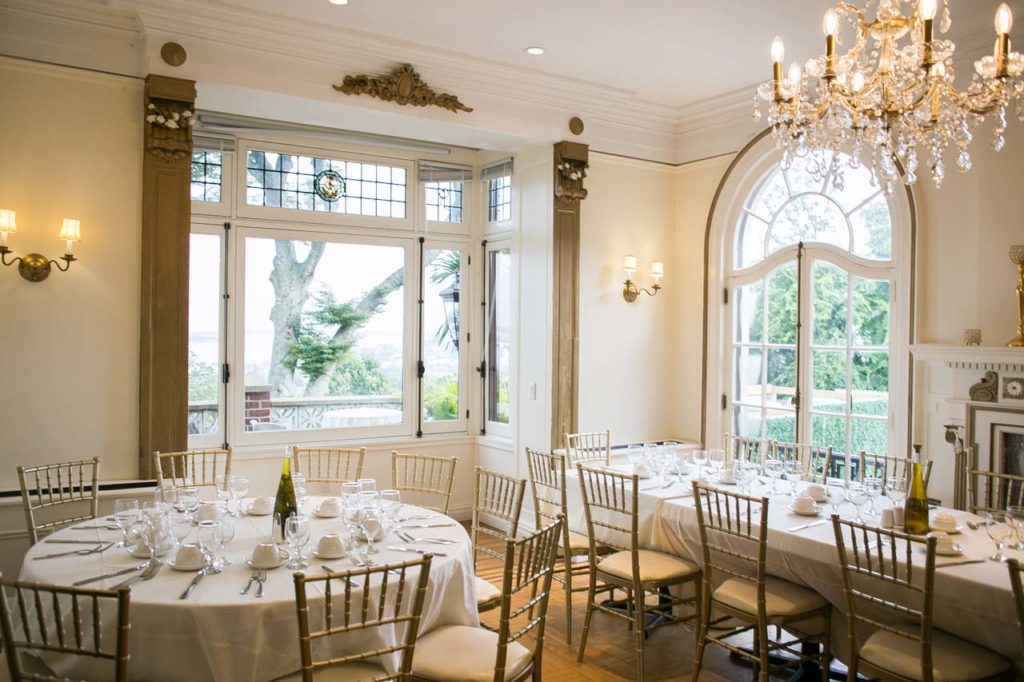
“We cleaned up and painted in the beginning, but all of the heavy-duty work started about five years ago,” she said. “When the permits were issued, we began work on the integrity of the building—upgraded the electric system and plumbing and put in sprinklers and a fire alarm system. Then, we basically knocked down the entire first floor and restored it to its original glory. We obtained photos of the interior—the way it looked 100 years ago—and slowly pieced it back together. We replaced arches that had been removed and reinstalled eight floor-to-ceiling windowed doors. We also collected every ounce of information we could about the property.”
The house was built in 1908 for Louis and Laura Stirn, granddaughter of Brooklyn Bridge builder John Roebling. At the time, Grymes Hill had become a fashionable residential neighborhood favored by wealthy German businessmen. Stirn, a German émigré and prominent silk merchant, owned several textile mills, while his wife was an expert on botany and horticulture.
The design of their home incorporated a number of then technologically advanced features, including glazed polychrome terracotta, cast concrete, and Portland cement stucco facings. They occupied the house until their deaths (Laura in 1943, Louis in 1962), at which time the property was sold to Reuben and Blanche Gross.
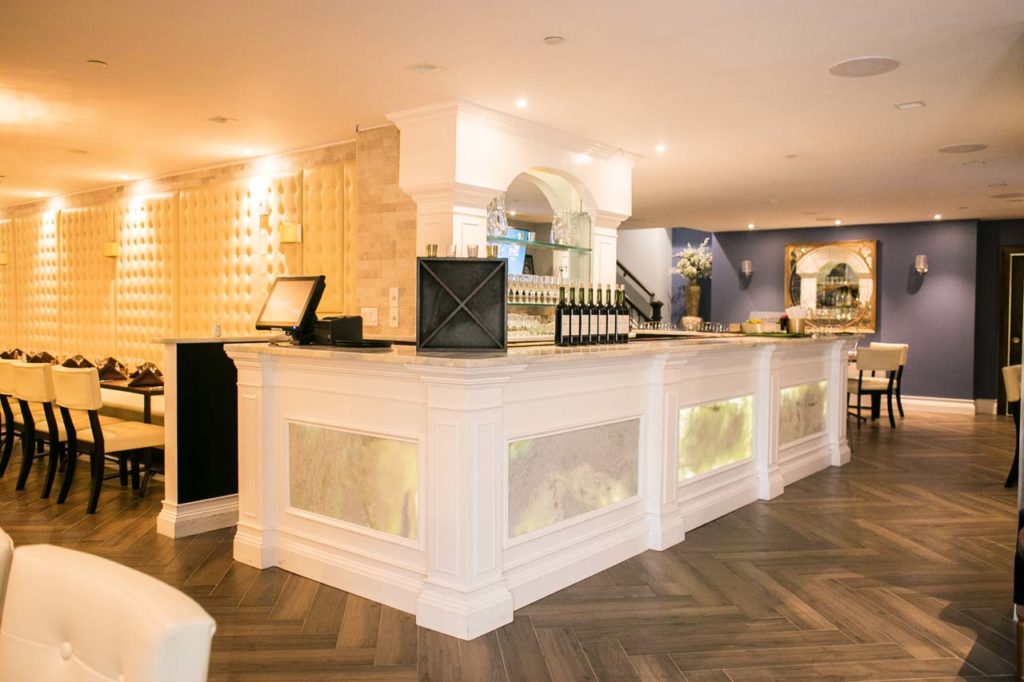
“This was a very wealthy neighborhood filled with summer homes and year-round residences for some of Staten Island’s most well-known families,” Biancardi said. “Suzette Grymes, wife of New Orleans lawyer John Randolph Grymes, for which Grymes Hill is now named, started buying property in the mid 1800s and created an estate called Capo di Monte. And then, of course, there is the Vanderbilt mansion and several other notable homes. From the very beginning, it was our goal to preserve and celebrate the rich history that thrived in this magnificent section of Staten Island.”
Biancardi’s new cultural center on the site, Casa Belvedere (“house with a beautiful view” in Italian), was incorporated in 2009, and began slowly with a handful of film screenings and language classes, but its curriculum grew.
“I have been fascinated by Italian arts and culture ever since I was a kid,” Biancardi said. “The Renaissance and its impact on Western civilization… that is my Italian culture, my history, and that is what I wanted Casa Belvedere to celebrate,” but quickly added that her strongest inspiration came from her parents.
“This is a monument dedicated to them, and all other immigrant parents who left loving families and safe havens for an unknown territory and a new beginning,” Biancardi said. “What courage, conviction, and determination they had to travel across the Atlantic, knowing they may never see their loved ones again.”
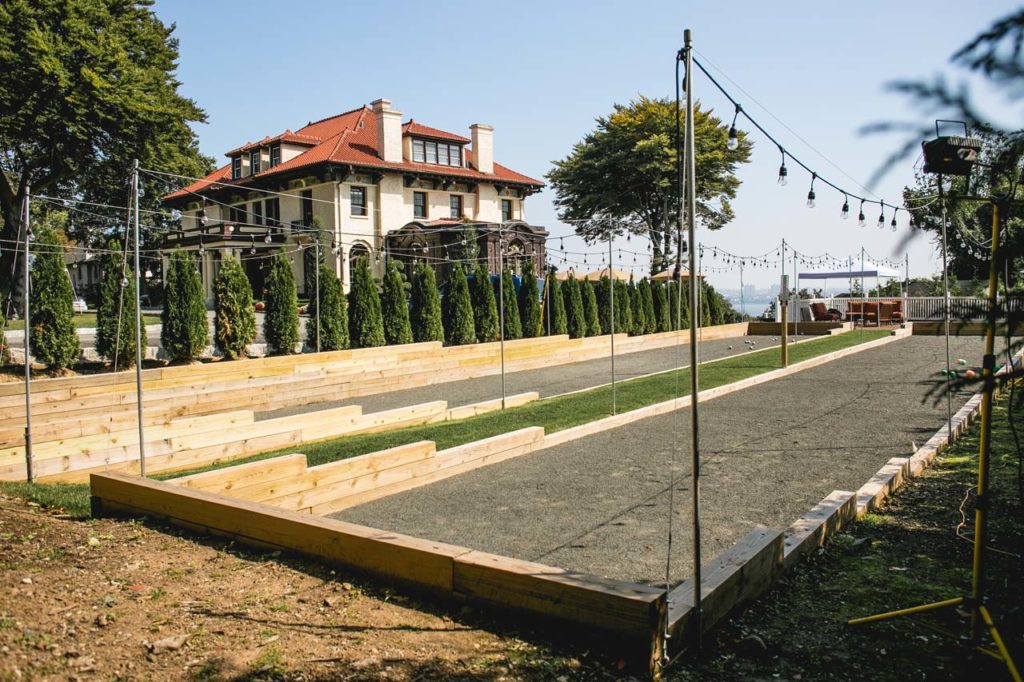
For several years, Biancardi’s programs flourished, including intermediate and advanced Italian language classes for both adults and children and “in cucina” culinary classes for both educational and recreational purposes, but when operating expenses mounted and additional renovations were required, she was forced to reinvent her dream.
“We were struggling, and I even contemplated closing altogether,” she said. “But then in 2014, we came up with the concept of outsourcing the first floor when it was not in use. We introduced the idea of a dining club membership, and that has been a great success.” The resulting Belvedere Club, operated by Maria Buonsante and with menus coordinated by Chef Franco Franzese, is a members-only supper club inspired by The Great Gatsby era. Members pay an initial $2,000 fee to join and $1,000 in annual dues, plus a minimum yearly spending requirement. Dining events are hosted Wednesday through Sunday and proceeds help to underwrite Casa Belvedere’s cultural programs as well as maintenance and future renovations.
“Food is at the center of our heritage, so this was a perfect fit,” Biancardi said. “Our foundation hosts events around The Belvedere Club’s schedule; there’s excellent food, great service, and members are very happy.”
The super club concept expanded further in May with the launch of the Bacco Wine Bar, a social event located on the Garden Level of the mansion.
“It’s our newest amenity for members to enjoy,” Biancardi said. “And works well with the Foundation because it offers a spot for wine tastings and lectures.”
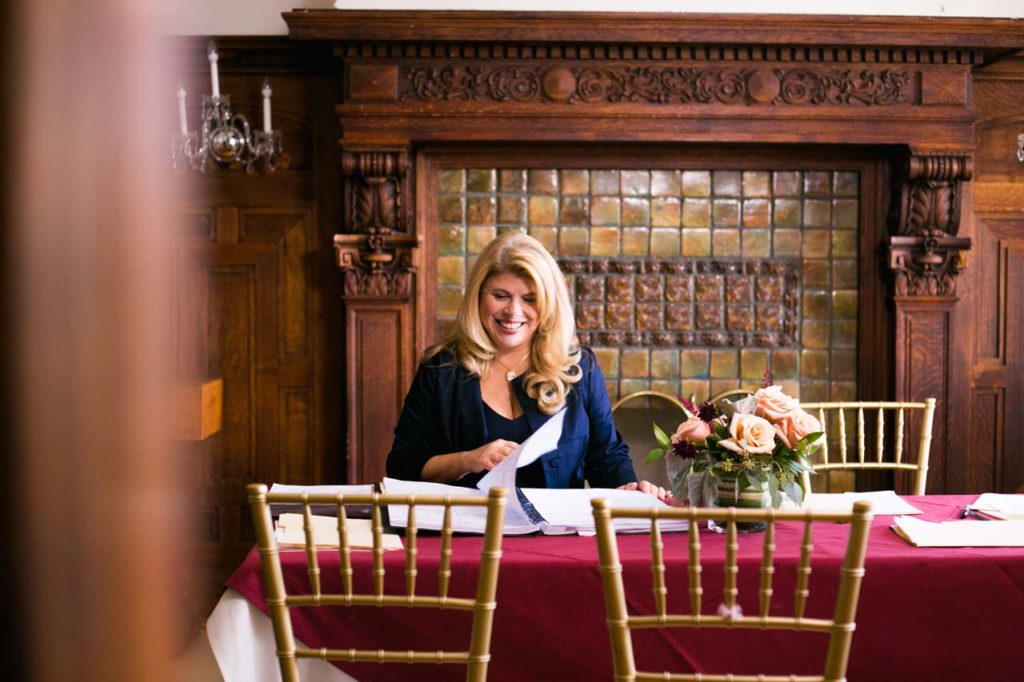
Bocce courts, which are open to both members and the public every Thursday evening, were also added to the landscape this summer. “In 2018 we hope to add a new roof and start work on a city-funded stair tower so the public can access all floors,” Biancardi said, adding that she credits Casa Belvedere’s success to her Executive Board of Governors, which includes Salvatore Calcagno, Robert Cutrona, Bianca Formica, Colleen Kelleher-Sorrentino, Frank Naso, Luciano Rammairone, and John Profaci, who serves as chairman.
“A board member recently asked me if I would have done things differently if I had known what I was getting into,” Biancardi concluded. “But this was a labor of love. I had and still have so much passion for this building and this project. I would do it all over again in a heartbeat.”
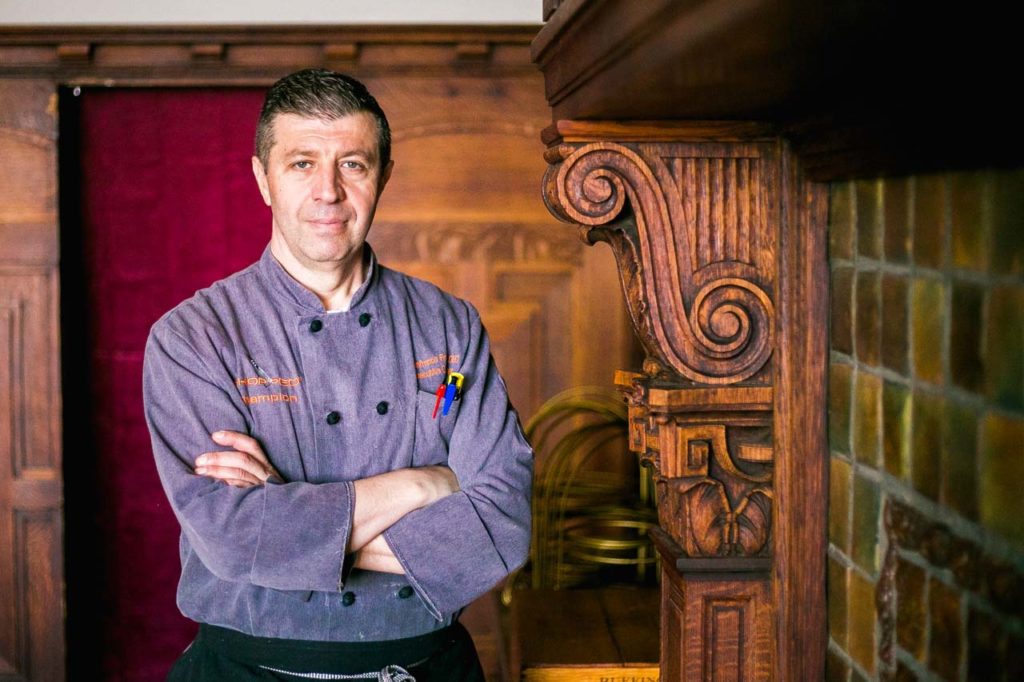
Casa Belevedere: The Italian Cultural Foundation
79 Howard Avenue / 718.273.7660 / casa-belvedere.org

